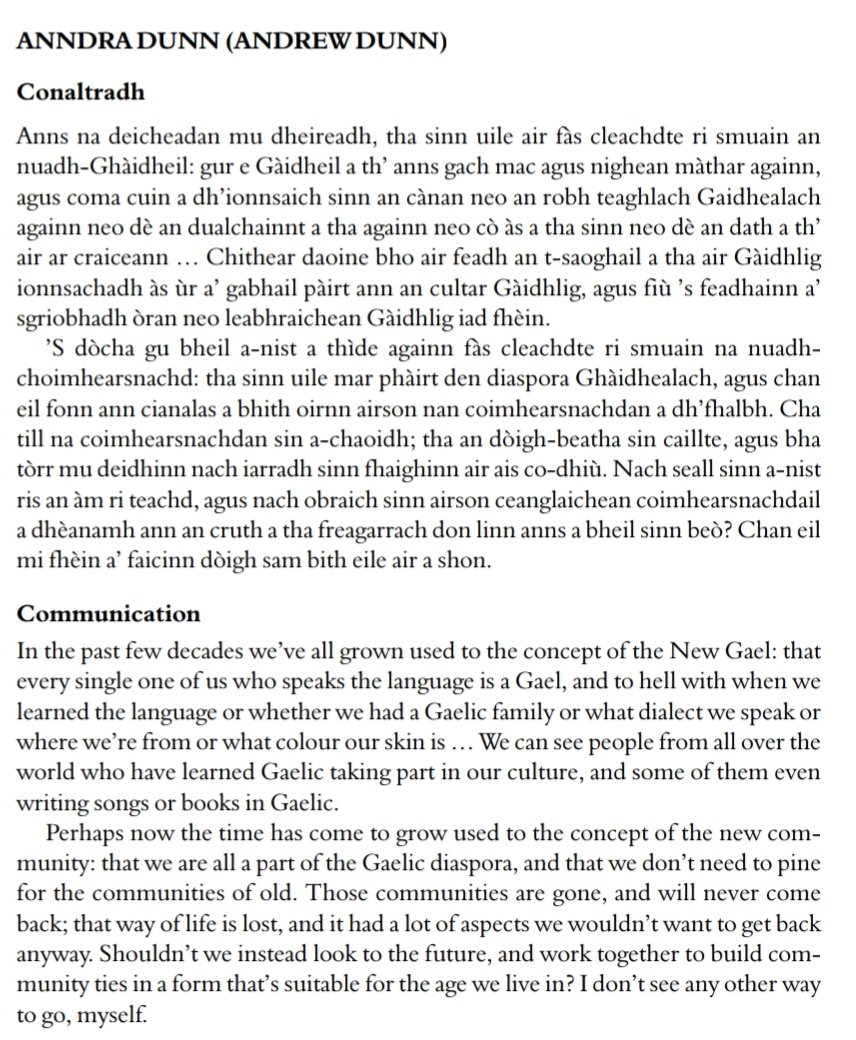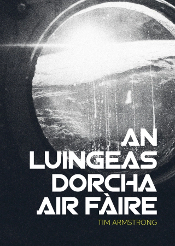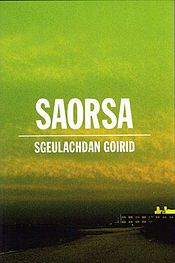Commentators have been predicting Gaelic’s death for some time, but Gaelic is nowhere near going out of use as a spoken language in Scotland. Gaelic will be spoken by learners, new speakers, and native speakers alike long after everyone reading this post is dead and buried. Gaelic communities are, however, rapidly changing, and that change is a cause of anguish for many. The political scientist William W. Bostock (1997) has called this sort of distress ‘language grief’, the collective despair that communities can feel when they perceive that their language is falling out of use.
As in any situation where people are grieving, it can be natural to try to assign blame. We can see this happening in current debates about the future of Gaelic, with claims and counter claims that different groups are to blame for Gaelic’s ‘demise’: academics, Bòrd na Gàidhlig, the government, learners, native speakers, Gaelic-medium educators, and so on, but the truth is that no living group of Gaelic speakers or supporters is to blame. The current state of Gaelic speaking communities is the result of political, economic, and social forces acting over centuries. Assigning blame is understandable but thoroughly counterproductive if we want to build the kind of social movement that can actually help to increase Gaelic-language acquisition and use in Scotland.
No one disagrees about the numbers, but there is substantive disagreement about the best course of action. We now have reliable data that strongly suggests that the last traditional Gaelic communities in the Western Isles arrived at a kind of tipping point sometime in the late 1960s and 1970s when community-level transmission of the language to children born in those years started to break down. (Mac an Tàilleir et al. 2010; and cf. MacKinnon 2006; NicAoidh 2006; Smith-Christmas & Smakman 2009; Ó Giollagáin et al. 2020)
While many families in these communities still raise their children in Gaelic and/or send their children to Gaelic-medium units, that ‘tipping-point’ generation is now in its 50s and 60s, and for generations below this age, the default community language is overwhelmingly English. Gaelic has not died, but it has changed from a community-transmitted language to a network language everywhere in Scotland now. That is the reality. The question is what to do about it.
There is no reason to believe that in the long-term Gaelic could not be revived as a community-transmitted language in many places in the Highlands and Islands, but this will require years of grassroots language activism in these areas, and anyone who argues that we can build the kind of sustained community-wide support required for such a huge effort in the short-term, or even in the medium-term, is very much underestimating the enormity of the task.
It is also important to recognize that rural communities today are fundamentally different from Gaelic communities fifty or a hundred years ago, and not just in terms of language use. In general, UK society is becoming ever more cosmopolitan, mobile, and atomized, and communities in the Highlands and Islands of Scotland are no exception. Discussions around the Scottish Gaelic revival often suffer from a great deal of romanticism about traditionally Gaelic-speaking communities, but the reality is that both the relative isolation and the intensely communal way of life that once sustained the language in the Northwest of Scotland are now long gone. We cannot go back in time, and in many respects, we wouldn’t want to. (see Dunn 2019)
Instead, the work now is to build on our successes over the last fifty years of Gaelic-revival activism and strengthen Gaelic networks throughout Scotland, anywhere Gaelic speakers can be found, from Edinburgh to Shawbost. Sleat in Skye can be seen as one model of what can be accomplished in terms of strengthening a dense rural network of Gaelic speakers. Gaelic in Sleat is not a community-transmitted language, yet, but it is also very much not dead, and there is no reason to believe that we could not replicate many elements this model throughout the Highlands and Islands.
We need to build a broad movement across Scotland to revive Gaelic, and to do that, we need to build solidarity between Gaelic speakers of all kinds, and neither finger pointing nor proclaiming Gaelic’s imminent demise will help us at all in this effort. Of course we have to be realistic about the state of Gaelic, but we also have lots of reasons to be optimistic.
People cannot be scared or shamed into saving a language. Rather, the future of Gaelic can only be built on a foundation of solidarity and optimism.
More on some of the concepts I used above:
Living language — What makes a ‘living’ language is a question of ideology, not demographics. There is no objective linguistic or sociological measure that we can use to say definitively that a language is living or dead. It really is just an opinion. Any language that is in some way still used and passed on could be considered ‘living’ depending on your criteria. The key factor is not speaker density, but language loyalty. If speakers are zealous about using their language and passing it on, that language community will persist and possibly even grow, but if speakers are shifting to using and passing on a new language, it doesn’t really matter how closely they live together; their language will sooner or later pass out of use.
Community-transmitted language — A language can said to be transmitted to the next generation by the whole community when (almost) everyone in a given place speaks a particular language, and that language is used as the common means of social interaction between all generations in (almost) all situations. Is such a case, children not only acquire the language from their parents and teachers, but also from extended family members, from neighbours, and critically, after a certain age, from other children. For some, community language transmission is what makes a language ’really’ living, but as above, this is just an opinion rather than some linguistic fact. The best current data strongly suggests that it has been several generations since Gaelic was a fully community-transmitted language anywhere in Scotland.
Network language — A network language would be one that is spoken by a network of speakers spread out more or less densely in any given area and linked by a variety of sites of language use. In the case of Gaelic, such sites might include GME units and schools, Gaelic higher education, Gaelic-language workplaces, Gaelic-language church services, Gaelic events like the Mòdan and the Fèisean, Gaelic activist and special-interest groups, formal and informal Gaelic social centres (such as the proposed Cultarlann in Inverness or the Park Bar in Glasgow), and Gaelic-speaking homes. Gaelic’s future as a network language in Scotland is far from certain, but there is no reason to believe that Gaelic-speaker networks throughout the country couldn’t persist and even grow in the future.
Sources
Bostock, William W. (1997) “Language Grief: Its nature and function at community level.” International Journal: Language, Society and Culture (2).
Mac an Tàilleir, Iain, Rothach, Gillian and Armstrong, Timothy C. (2010) Barail agus Comas Cànain. Inverness: Bòrd na Gàidhlig.
MacKinnon, Kenneth. (2006) “The Western Isles Language Plan: Gaelic to English Language Shift 1972-2001.” In Wilson McLeod (ed.), Revitalising Gaelic in Scotland: 49-72.
NicAoidh, Magaidh. (2006) “Pròiseact Plana Cànain nan Eilean Siar: A’ Chiad Ìre-Rannsachadh air Suidheachadh na Gàidhlig anns na h-Eileanan Siar.” In Wilson McLeod (ed.), Revitalising Gaelic in Scotland: 73-87.
Ó Giollagáin, Conchúr, Gòrdan Camshron, Pàdruig Moireach, Brian Ó. Curnáin, Iain Caimbeul, Brian MacDonald, and Tamás Péterváry. (2020) The Gaelic crisis in the vernacular community: A comprehensive sociolinguistic survey of Scottish Gaelic. Aberdeen: Aberdeen University Press.
Smith-Christmas, Cassandra, and Dick Smakman. (2009) “Gaelic on the Isle of Skye: older speakers’ identity in a language-shift situation.” International Journal of the Sociology of Language (200): 27-47.








Amen! I strongly agree with this. I’m also very concerned by the fact that so many people in Gaelic activism and even some in academia are using biological metaphors for language in the current debate about the language. It isn’t appropriate, it doesn’t recognise the importance of power, politics, and socioeconomic factors on language shift, and plays into the hands of the opponents of Gaelic who are always talking of “dying languages”, “life support machines”, artificiality. Languages are social, not biological.
Tha “tipping point” na abairt ‘problematic’ ann an dòigh neo dhà, saoilidh mi. Mholinn don h-uile duine a bhith faiceallach. An toiseach, san fharsaingeachd, thathar ag aithneachadh gu bheil connotation neo ciall ‘troubling’ aige, le cuid ag ràdh gu bheil e stèidhichte bho thùs air racism. (Tha mi airson a dhèanamh gu math soilleir nach eil mi a’ faireachdain gun e sin ’s coireach gun do chleachd thusa e! Tha thu fhèin gu tùr neo-chiontach san dòigh sin). Ach faic seo, mar eisimpleir:
The Racist Origins of Tipping Point
https://www.merriam-webster.com/words-at-play/origin-of-the-phrase-tipping-point
Fiù’ s ged a chleachamaid an abairt “tipping point” ann an co-theacsa sociolinguistic a-mhàin (agus tha mi a’ gabhail ris gun e sin a bha thu fhèin a’ dèanamh) tha e na dhuiligheadas a bhith a’ bruidhinn air a sin ceangailte ri na h-Eileanan an Iar ann an 2022. Chan ionnan na h-Eileanan an Iar agus East Sutherland san 20mh Linn far an deach a chleachdadh ceangailte ri obair Nancy C. Dorian (neo Alba Nuadh san 20mh linn far an deach am facal a chleachdadh ann an rannsachadh eile.)
Anns an 21mh Linn, nuair a tha roghainn againn (agus tha roghainn daonnan ann), chan eil e na chuideachadh. Tha fios’m gu bheil neach-rannsachaidh neo dha anns na h-Oilthighean a’ feuchainn ri barrachd aire a thoirt don abairt – thug Wilson MacLeòid choir iomradh beag air anns an leabhar aige Gaelic in Scotland: Policies and Ideologies (2020), ach saoilidh mi gum bu choir dhuinn a bhith a’ smaoineachadh air briathrachas eile. Aon dhe na h-adhbharan nach eil cuideam air “tipping point” gu moran feum ann an leasachadh cànain, ’s e gu bheil e a’ toirt dhuinn nadar de bheachd nach fhaod cànan làitheil tilleadh, agus tha eisimpleirean eadar-nàiseanta ann a tha a’ dearbhadh nach eil sin fior.
Tha e na dhuiligheadas a bhith a’ cleachdadh abairt mar “‘tipping point’ generation”, saoilidh mi. Tha e rud beag coltach ri “sweeping generalisation”. Dh’fhaodadh cuid smaoineachadh, gu h-araid mur eil thu eòlach air an suidheachadh ann an dha-rìreabh, gu bheil nadar de homogeneity neo uniformity ann an cleachdadh cànain ginealach (aon generation). Chan eil sin buileach fìor anns na h-Eileanan an Iar.
Saoilidh mi an Alba a thaobh na Gàidhlig gum bu chòir dhuinn abairt eile a lorg seach “tipping point”. Tha faclan nas iomchaidh ann a chuidicheas le bhith ag innse dhuinn mar a tha suidheachadh canain – faclan nach eil cho ’amh’, ma dh’fhaodas mi a chur mar sin. ‘S dòcha gu robh e freagarrach ann an linn trath Dorian – ach chan eil e cho iomchaidh a-nis. ‘S urrainn dhuinn a bhith nas fhearr na seo!
Gnothach eile a bhuail air an leughadair seo, ’s e nach eil guth mionaideach ann air trì rudan air leth deatamach ceangailte ri leasachadh-canain. Tha iad seo gu math cudromach a thaobh sgìrean ionadal agus na h-Eileanan an Iar. (Bu mhath leam ainmeachadh cuideachd gu bheil iad a’ toirt buaidh air bailtean agus sgìrean ‘urban’ – cha dean math dhuinn cus sgaraidh a dhèanamh).
Seo na rudan – bheir mi ‘KEY CONSIDERATIONS’ orra seach gun deach an artigeal seo a sgriobhadh ann am Beurla:
KEY CONSIDERATIONS (tha rudan eile ann cuideachd)
1) buaidh calpachais
2) co-dhùnaidhean poilitigeach
3) structaran deamocratigeach
Anns an aiste aig toiseach gnothaich (paragraf a dhà), thathas a’ toirt iomradh air poilitigs, gnothaichean eaconomigeach agus rudan sòisealta, agus mar a thug iad air buaidh air staid na Gàidhlig thar na linntean.
Ach, le bhith a’ cleachdadh na h-argumaid seo – agus tha an t-ùghdar ceart a bhith a’ togail na rudan seo – feumar gabhail ris gu faodadh buaidh làidir a bhith aig na rudan seo air staid na Gàidhlig anns na bliadhnachan air thoiseach.
Ma tha daoine airson eisimpleir ‘ann an dha-rìreabh’ fhaighinn air na seòrsa coimhearsnachdan a tha na riaghladairean againn air a bhith a’ cruthachadh (is sinne a’ gabhail ris ro thric), chan eil e doirbh. Tha Gàidheil – neo luchd na Gàidhlig mar a chanas feadhainn – feumach air taighean. Agus chan eil taigheadas gu leòr ann. Chan eil obraichean iomchaidh ann. Tha na cothroman sòisealta a’ lagachadh. Foghlam aig àrd ìre – gun a bhith a’ teicheadh. Agus mar sin air adhart. A bharrachd air corra rud an siud ’s an seo – agus chan eil teagamh nach eil ‘bright spots’ ann – chan eil na cothroman ann.
Tha buidhnean mar Mhisneachd air gnothaichean den t-seòrsa seo a thogail mar thà. Tha daoine ann an coimhearsnachdan beaga ionadail air a bhith a’ strì. Uaireannan, chan eil na daoine sin a’ faighinn aithneachadh. Tha irisean mar Am Pàipear Beag air a’ bhith a’ togail gnothaichean, tro cholbhan mar Aonghas Pàdraig Caimbeul. Tha fiù ’s Kate Forbes ag aithneachadh gu bheil feum air rudeigin a dhèanamh, is i a’ cur comataidh bheag eadar-amail air dòigh ann an 2022 gus deiligeadh ri ceist an eaconomaidh (Tha mi’n dòchas gun dean seo feum. Chì sinn).
‘S e na co-dhùnaidhean poilitigeach, na poileasaidhean nan cois agus na structuran nach eil ag obrachdain a tha, gu ìre, ag adhbharachadh gu bheil cleachdadh canain agus social density a thaobh na Gàidhlig a’ lagachadh aig ire ionadail. Tha buaidh aig a seo air “language loyalty” agus language shift. Chan eil mi ag ràdh gun e gnothach-simplidh a th’ ann – feumar coimhead ri gnothaichean-cànain ann an iomadach dòigh, agus tha iomadh rud ann nach eil mi ag aithneachadh an seo a tha a’ toirt buaidh air gnothaichean. Ach ’s e poileasaidh agus cumhachd a th’ aig teis meadhain torr dhe.
Mar sin, chan eil mi a’ smaoin gu bheil e buileach coileanta, leis a h-uile urram, cuideam a chur air ’networks’ mar an rathad air adhart (‘concept’ nach eil buileach ùr co-dhiù, agus rud nach eil dearbhte a thaobh leasachadh-canain maireannach ach a-mhàin ann an suidheachaidhean far a bheil ’density’ ann) as aonais sùil nas mionaidaiche a thoirt air poilitigs, an eaconamaidh agus gnothaichean soisealta.
Tha daonnan cothrom atharraichean a chur an-sàs. Cha ruig mi leas iomradh a thoirt air na h-eòlaichean eadar-nàiseanta cliuiteach a tha air a bhith ag ràdh sin thar nam bliadhnachan. A bheil sinn air gèilleadh an Alba?
Tha rud eile anns an aiste a’ togail ceann – “romanticism”!
“Discussions around the Scottish Gaelic revival often suffer from a great deal of romanticism about traditionally Gaelic-speaking communities”
Tha an t-ùghdar ag ràdh gu bheil daoine ann a tha ris a’ chleas seo. ‘S dòcha gu bheil seo a’ dol gun teagamh. Ach chan eil mise eòlach air na daoine seo, agus tha mi eòlach air a’ mhòr-chuid ann an saoghal “oifigeil” na Gàidhlig. Ma tha na “romanticists” ann is iad a’ toirt buaidh air leasachadh na Gàidhlig, bu mhath leam faighinn a-mach mun deidhinn. (No jokes about needing romance in my life, taing!).
Saoilidh mi gu feumar barrachd fiosrachaidh fhaighinn ma tha seo ag adhbhrachadh trioblaid. A bheil na “romanticists” seo a’ toirt buaidh air beachdan Bhòrd na Gaidhlig, neo planaichean-cànain, mar eisimpleir? Saoilidh mi – agus canaidh mi seo ann am Beurla – the majority of official Gaelic Language Plans I’ve read recently, and I’ve had the pleasure of reading a few, have been some of the most un-romantic documents I have ever perused in my life.
Na Gàidheil agus na luchd-leasachaidh a ’s aithne dhomh-sa, chan eil uine aca a bhith ’romantic’ mu dheidhinn Gàidhlig. Tha iad eolach air an concept ‘language romanticism’, gun teagamh. Ach cha tig iad faisg air nan obair làitheil. Tha iad airson coimhearsnachdan ionadail ùra a thogail tro mheadhan na Gaidhlig. Coimhearsnachdan a chuireas fàilte air a h-uile seorsa neach-labhairt Gàidhlig, eadar luchd-labhairt ùra (new speakers) agus daoine le ceangail le Gàidhlig bho thùs. Coimhearsnachdan a tha fosgailte a thaobh equality, diversity agus inclusion.
Tha iad deònach feuchainn, agus tha làn fhios aca nach bi e furasta, agus nach tachair e sa bhad. Chan eil ’romanticism’ a’ tighinn a-staigh air beachd na h-activists seo.
Tha an aiste a’ toirt iomradh air Slèite mar nadar de “eisimpleir” de sgire a tha soirbheachail a thaobh ’networks’ – sgire aig a bheil “density” math de luchd-labhairt. Gu dearbha, saoilidh mi gu bheil an aiste ceart a bhith a’ moladh Slèite. Tha muinntir Shlèite (gu dearbha an t-Eilean Sgitheanach air fad) agus luchd-obrach SMO rim moladh airson a h-uile rud a rinn iad. Tha obair air leth a’ dol.
Ach, tha Slèite na ‘exception’ ann an leasachadh-cànain ann an Alba. Feumar cuimhneachadh gu bheil Riaghaltas na h-Alba a’ cur na milleanan mòra ri Sabhal Mòr Ostaig. Tha an t-àite na shàr eisimpleir leasachaidh, saoilidh mi, ach tha e ‘atypical’.
Calpachas, poilitigs agus structaran democratigeach – ma gheibhear deiligeadh ris na trì rudan seo bidh e feumail (agus mur a deiligeadh sinn riutha, cha bhi Gàidhlig beò mar chànan làbhairteach làitheil air bilean an t-sluaigh). Bhiodh e math barrachd còmhraidh a dhèanamh mu dheidhinn. Chan eil ‘guarantee’ ann gun soirbhich leasachadh-cànain le adhartas anns na raointean sin (tha fiosrachadh ann bho air feadh an t-saoghail a thaobh sin), ach bidh e na chuideachadh.
Tha mi ag aontachadh gu mòr leis na faclan mu dheireadh anns an aiste: “the future of Gaelic can only be built on a foundation of solidarity and optimism.”
Ma ni sinn obair còmhla, le toinisg agus tuigse, faodaidh coimhearsnachdan ionadail fallain a bhith againn, le mòr-chuid de dhaoine a’ bruidhinn Gàidhlig gu làitheil, a-rithist.
“Commentators have been predicting Gaelic’s death for some time”
Commentators have been predicting the death of Gaelic as a community language, which you admitted yourself has been happening. There’s a difference. Whether the death of Gaelic as a community language inevitably leads to it’s death somewhere down the line is another matter.
“We need to build a broad movement across Scotland to revive Gaelic, and to do that, we need to build solidarity between Gaelic speakers of all kinds”
Agreed absolutely. It also has to be recognised that density of speakers, particularly first language speakers, are important for a language. Currently the islands and Gaedhealtachd areas are the places that have the greatest density and it is imperative that these are protected as Gaelic strongholds. Speakers allover Scotland can surely recognise this and support the efforts of their island comrades (Guth nan Siarach for example) to gain recognition as special linguistic areas with supports such as those recommended by sociolinguists in the Gaelic Crisis report. People have honed in on this identity thing “Ohh I’m a Gael too blah blah”, cop on. It doesn’t matter. What matters is what’s good for the language, and what’s good for the language is Gaelic speaking communities and Gaelic speaking communities with a relative amount of density of speakers relative to English speakers are more valuable ‘to the language’ than networks of speakers within overwhelmingly English speaking environments. And support for this doesn’t preclude support for the nationwide networks and supports for learners, second-language speakers and the small (hopefully to grow) amount of native speakers elsewhere.
“For some, community language transmission is what makes a language ’really’ living”
For me this is the case, to an extent. Without areas where community language transmission can happen naturally it becomes increasingly difficult over generations to raise native speakers, first language speakers, in a language. One pair of dedicated parents could raise a child with a minority language, but what are the chances of their children or grandchildren doing the same when the majority of their peers and those in the society around them will be speaking English primarily? Not likely. Research on immigrant languages shows as much. The average immigrant language does not last more than three generations before linguistic assimilation, in English speaking countries like the US the average may currently be two generations.
The only immigrant or minority languages that have survived, besides those like Spanish which are constantly replenished by immigration, are the languages which have either secluded themselves completely from the English language society (the Yiddish of Orthodox Jews) or the language communities which have vigorously protected the domains of their language within the geographical areas where they still were in the majority (French in Québec for example, outside of Québec French can more or less said to be extinct on the American continent)
Pingback: The Death Discourse is a Dead End | Air Cuan Dubh Drilseach